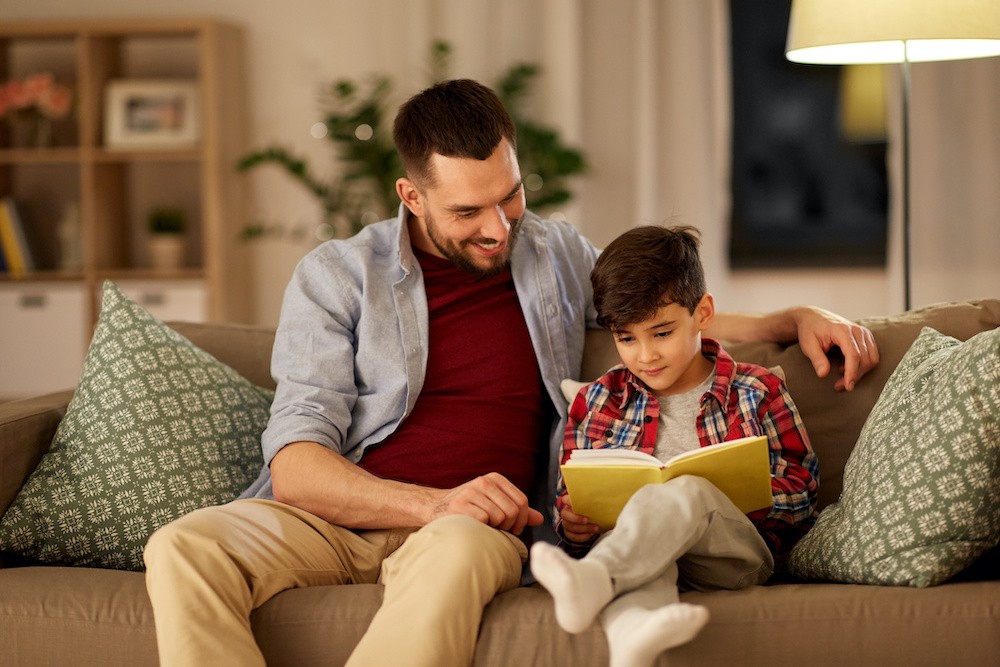Reading to your child and sharing books and stories
April 08, 2022

Enjoying being read to, talking about books, reading stories and becoming familiar with them creates enthusiasm and interest that’s likely to stay with children. It will then make them want to recreate the pleasure and fun for themselves.
Books are not just for bedtime
Bedtime is sometimes seen as the best time to read stories, but adults and children can both be tired then. There’s a whole range of other opportunities to read with children; for example, at the doctor’s or on a journey. Telling stories is also important, whether they are tales handed down through families, made-up stories featuring the child or retellings with familiar characters and plots. Talking about the pictures in a book helps children to understand the meaning, while talking about the story afterwards can help them make connections to their own lives or other stories they have seen or heard.
Children can act out the story themselves or use small figures, bricks or their fingers, retelling it in their own words with the help and encouragement of an adult. Or they may want to draw a picture afterwards, which will promote more discussion and help them later when they come to tell or write their own stories.
Rhymes and stories
Children enjoy the familiarity of returning to the same rhymes or stories and will often join in with repeated phrases or echo what they hear. As they get to know them, they will develop favourites and want to hear them again and again. This is quite normal, as they are building involvement in individual stories and familiarity with different types. This will help them understand story structure, predict what’s coming next and get to know how the language of stories is different to everyday talk – for example, we don’t normally say, “Once upon a time far away”. All of this will give them confidence and help when they come to read and write for themselves.
Starting to read
Reading aloud to children can promote discussions about the meanings in the story but also how books work: the direction of the print, how familiar words are repeated and the link between words and pictures.
Choosing books is best as a joint activity, but children also need time to browse and select their own books, as this will help to develop their own interests and establish favourites. Often they will use the pictures from familiar books to tell their own story which will develop their imagination and understanding of how stories work and events progress.
Sometimes they might surprise adults by remembering familiar stories word for word, using the same intonation they have heard from them. This isn’t cheating but finding out what it feels like to be a reader.